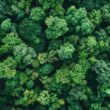Electricity demand is set to surge in 2024 and 2025, reaching some of the highest levels seen in the past two decades, according to a new report from the International Energy Agency (IEA). Solar PV alone is expected to meet half of the increase.
The rise in global electricity demand, fueled by strong economic growth, extreme heatwaves, and the increasing adoption of technology that runs on electricity like electric vehicles (EVs) and heat pumps, marks the fastest increase in years. The IEA’s ‘Electricity Mid-Year Update’ forecasts global electricity demand to grow by approximately 4% in 2024, up from 2.5% in 2023. This would represent the highest annual growth rate since 2007, excluding exceptional post-crisis rebounds. The report predicts a similar 4% growth in 2025.
Renewable energy sources are also on track for rapid growth. Their share of global electricity supply is expected to rise from 30% in 2023 to 35% by 2025. For the first time, electricity generation from renewables in 2025 is expected to surpass that of coal. Solar PV will play a key role, meeting about half of the projected increase in global electricity demand through 2024 and 2025, with solar and wind combined covering up to three-quarters of the growth.
Despite the rapid expansion of renewables, coal power generation is unlikely to decline in 2024, particularly in high-demand regions like China and India. Consequently, carbon dioxide (CO2) emissions from the global power sector are expected to plateau in 2024, with a slight rise followed by a decline in 2025. However, the report notes that uncertainties remain—particularly concerning China’s hydropower production, which rebounded strongly in early 2024 and may help curb coal use later in the year.
Major economies are driving much of the demand surge. India is projected to see an 8% increase in electricity consumption in 2024 due to strong economic activity and extreme heatwaves. China’s demand is set to grow by over 6%, driven by service industries and clean energy manufacturing. Meanwhile, after a dip in 2023, electricity demand in the United States is expected to rise by 3%, spurred by economic growth, higher cooling needs, and the expansion of the data centre sector. The European Union, recovering from the energy crisis, is forecast to see a more modest increase of 1.7%.
Air-conditioning use remains a significant factor in rising electricity demand, with intense heatwaves in the first half of 2024 straining power grids in many regions.
“Growth in global electricity demand this year and next is set to be among the fastest in the past two decades, highlighting the growing role of electricity in our economies as well as the impacts of severe heatwaves,” said Keisuke Sadamori, IEA Director of Energy Markets and Security.
Sadamore added, “It’s encouraging to see clean energy’s share of the electricity mix continuing to rise, but this needs to happen at a much faster rate to meet international energy and climate goals. At the same time, it’s crucial to expand and reinforce grids to provide citizens with secure and reliable electricity supply – and to implement higher energy efficiency standards to reduce the impacts of increased cooling demand on power systems.”
With artificial intelligence (AI) gaining traction, data centres are drawing attention for their growing electricity demand. The report emphasises the need for better data collection and stocktaking to understand the impact of AI on energy use. In response, the IEA has launched the ‘Energy for AI & AI for Energy’ initiative, which will consult with stakeholders and culminate in the Global Conference on Energy and AI in Paris on December 5, 2024.





















